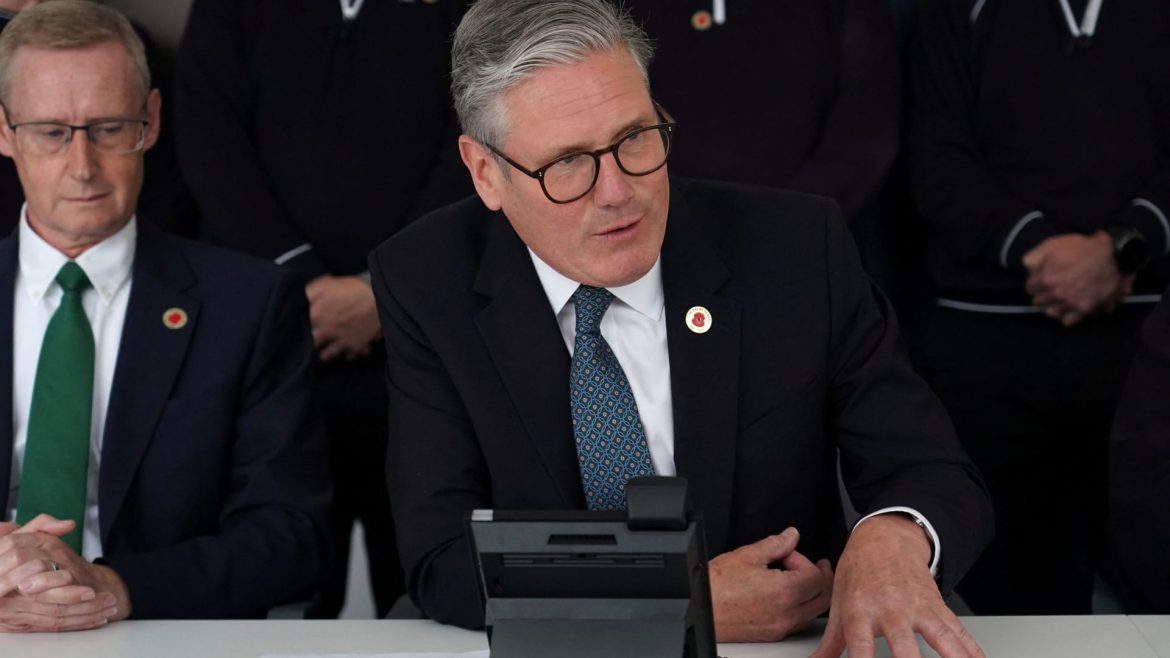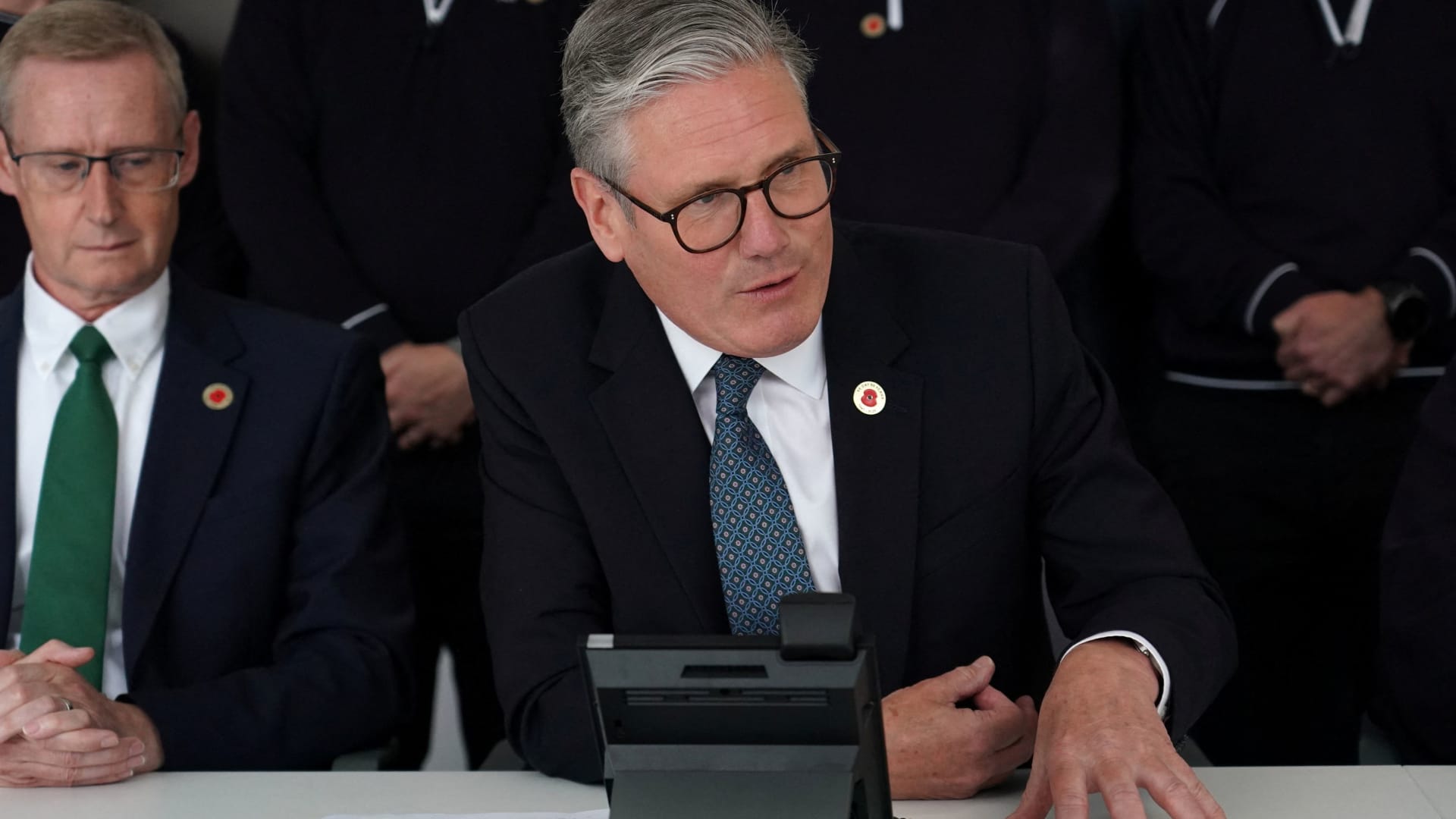The UK economy stands at a pivotal moment, grappling with a surge in government borrowing that has sparked concerns among economists, investors, and policymakers alike. The Labour government, led by Chancellor Rachel Reeves, faces a delicate balancing act: fulfilling campaign promises of increased public spending while maintaining fiscal discipline in the face of rising borrowing costs and market skepticism. This analysis explores the root causes of the borrowing surge, the political and economic pressures shaping fiscal policy, and the potential consequences for the UK’s economic future.
The Numbers Don’t Lie: A Deep Dive into the Borrowing Surge
The most immediate cause for concern is the stark rise in government borrowing. April saw borrowing jump to £20.2 billion, the fourth-highest April figure on record. This figure significantly exceeded forecasts, immediately raising eyebrows and sparking debate about the sustainability of current fiscal policy. While fluctuations in monthly borrowing are not uncommon, the magnitude of this increase, coupled with other indicators, suggests a deeper trend.
Several factors contribute to this surge. Increased government spending, particularly under Labour’s ambitious social and infrastructure programs, is a primary driver. These investments, aimed at long-term growth and societal well-being, require substantial upfront funding, adding pressure on public finances. Simultaneously, tax revenues may be lagging behind expectations, potentially due to a sluggish economy or unforeseen economic headwinds. The combination of increased spending and potentially weaker revenue creates a widening gap that needs to be filled through borrowing.
The UK’s economic recovery from the COVID-19 pandemic has been uneven, with sectors like hospitality and retail still struggling to regain pre-pandemic levels of activity. This sluggish recovery may be contributing to lower-than-expected tax revenues, exacerbating the borrowing surge. Additionally, the global economic environment remains uncertain, with rising interest rates and geopolitical tensions posing risks to the UK’s fiscal position.
Reeves’ Tightrope Walk: Balancing Ambition and Austerity
Chancellor Rachel Reeves finds herself walking a precarious tightrope. On one side, she faces pressure to deliver on Labour’s promises of increased public spending and investment in key areas like healthcare, education, and infrastructure. These promises resonated with voters and form a core part of the government’s mandate. On the other side, Reeves is confronted with the cold reality of rising borrowing costs and a skeptical market. Investors are closely scrutinizing the UK’s fiscal position, and any sign of fiscal irresponsibility can trigger a negative reaction, leading to higher borrowing costs and further economic instability.
The situation is further complicated by the lingering effects of previous economic policies. The Labour government inherited a substantial deficit, which they claim to be around $26 billion, from the Conservative administration. This inherited debt burden limits their fiscal flexibility and forces them to make difficult choices about spending priorities and tax policies.
To navigate this tightrope, Reeves must carefully balance short-term spending needs with long-term fiscal sustainability. This may involve prioritizing investments with the highest potential for economic growth and social return, while also implementing measures to control spending in other areas. Additionally, the government may need to consider reforms to the tax system to ensure it is fair, efficient, and capable of generating sufficient revenue to support public services.
Internal Divisions and External Pressures: A Perfect Storm
The challenges facing Reeves are not solely economic. Political divisions within the Labour party add another layer of complexity. Reports indicate mounting tensions within the ruling party, with disagreements over fiscal policy and spending priorities. These internal divisions can undermine the government’s credibility and make it more difficult to implement a coherent economic strategy. The climbdown on welfare cuts, spurred by internal revolt, exemplifies this challenge, raising concerns about Labour’s control over public finances.
External factors also play a significant role. The global economic environment is uncertain, with rising interest rates, geopolitical tensions, and potential trade disruptions all posing risks to the UK economy. These external pressures can exacerbate existing fiscal challenges and make it more difficult for the government to manage its debt. Rising borrowing costs are not unique to the UK. A global bond selloff contributes to the increase in British government borrowing costs, adding external pressure.
To mitigate these risks, the government must maintain a clear and consistent communication strategy, both domestically and internationally. This includes providing regular updates on fiscal policy, addressing market concerns, and demonstrating a commitment to fiscal responsibility. Additionally, the government may need to consider international cooperation to address global economic challenges, such as coordinating with other countries to stabilize financial markets and promote economic growth.
The Market’s Verdict: Investor Sentiment and Borrowing Costs
The financial markets’ reaction to the Labour government’s fiscal policies has been mixed, but increasingly concerning. Initially, there was a positive response to some of the government’s initiatives, but this quickly faded as investors began to scrutinizing the details of the budget and the implications for long-term debt sustainability.
The spike in UK government borrowing costs is a clear signal of investor unease. As borrowing costs rise, it becomes more expensive for the government to finance its debt, further straining public finances. The widening gap between UK and German borrowing costs is particularly alarming, suggesting that investors perceive the UK as a riskier investment than its European counterparts.
This negative market sentiment can have several adverse consequences. It can lead to a decline in the value of the pound, making imports more expensive and potentially fueling inflation. It can also discourage foreign investment, hindering economic growth and job creation. Furthermore, sustained high borrowing costs can force the government to cut back on essential public services, undermining its social agenda.
To address these concerns, the government must take steps to restore market confidence. This may involve implementing a credible fiscal consolidation plan, demonstrating a commitment to reducing the deficit over the medium term. Additionally, the government may need to consider structural reforms to improve the efficiency of public spending and enhance the UK’s long-term economic prospects.
Policy Options and Potential Outcomes: Charting a Course Forward
Faced with these challenges, the Labour government has several policy options to consider. One option is to implement further spending cuts. However, this approach could be politically difficult, given Labour’s promises to invest in public services. It could also be economically damaging, potentially leading to a slowdown in growth and increased social inequality.
Another option is to raise taxes. The government has already implemented some tax increases in its first budget, targeting businesses and high-income earners. However, further tax increases could stifle economic activity and discourage investment. The UK businesses have already been hit with a sharp rise in taxes.
A third option is to focus on boosting economic growth. By stimulating economic activity, the government can increase tax revenues and reduce the need for borrowing. This approach requires a comprehensive strategy that includes measures to improve productivity, encourage innovation, and attract foreign investment.
Finally, the Labour government might need to rethink its fiscal rules. Sources indicate that Rachel Reeves may change Britain’s debt. While fiscal discipline is important, overly restrictive rules can stifle economic growth and prevent the government from responding effectively to economic shocks.
The choice of policy options will depend on the government’s assessment of the economic outlook and its political priorities. However, it is clear that decisive action is needed to address the borrowing surge and restore market confidence. Failure to do so could have serious consequences for the UK economy.
A Fiscal Reckoning: The Road Ahead for the UK
The UK’s current economic situation demands careful navigation. The surge in government borrowing, coupled with rising borrowing costs and political pressures, creates a complex and challenging environment for the Labour government. Chancellor Rachel Reeves faces the unenviable task of balancing ambitious spending plans with the need for fiscal responsibility and market confidence.
The path ahead will require difficult choices and potentially unpopular decisions. The government must demonstrate a clear commitment to fiscal sustainability while also addressing the pressing social and economic needs of the country. Ultimately, the success of the Labour government will depend on its ability to navigate this fiscal tightrope and restore faith in the UK economy. The stakes are high, and the consequences of failure could be significant. Only time will tell if they can rise to the challenge.





